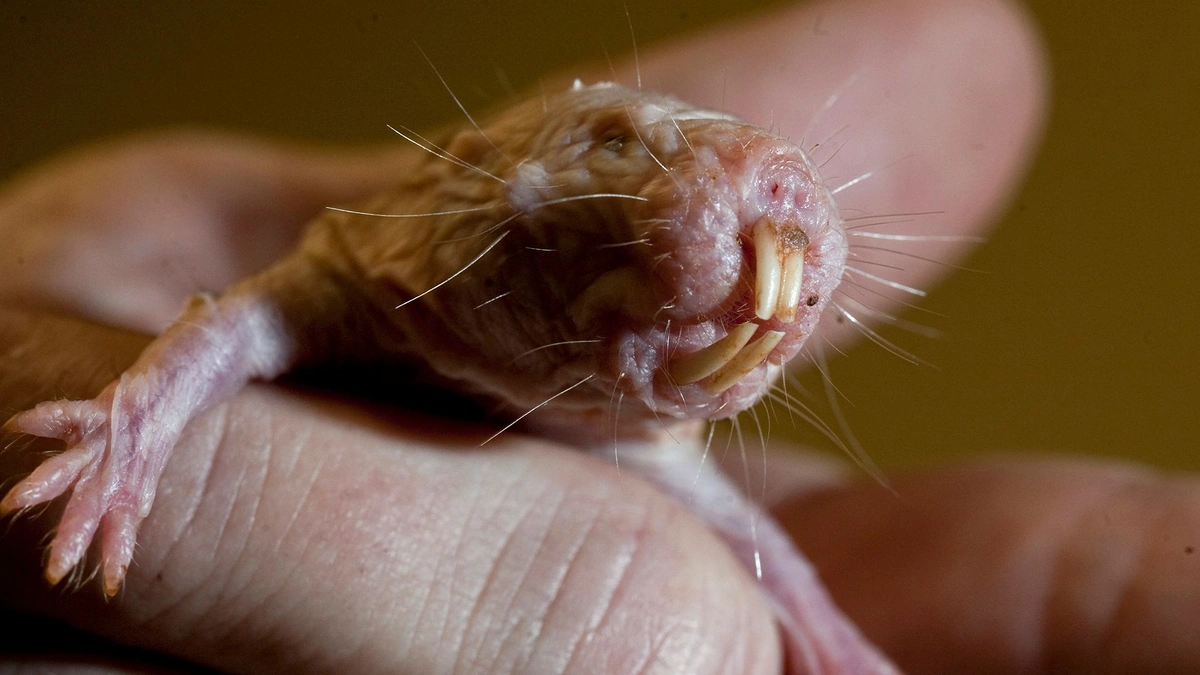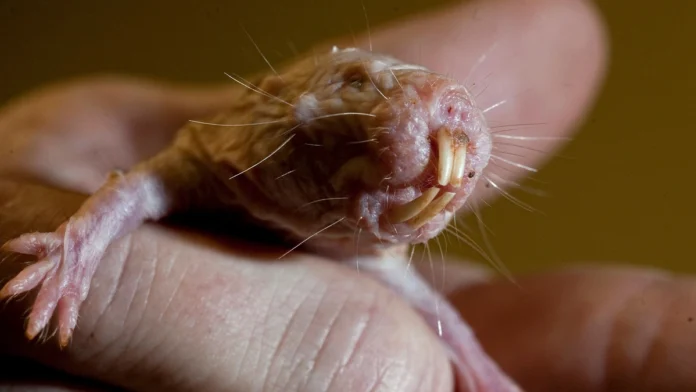Okay, let’s be honest. When you hear about rodents, longevity probably isn’t the first thing that springs to mind, right? We’re usually thinking scurrying, cheese-nibbling, and, well, not exactly paragons of health. But hold on to your hats because there’s a longest-living rodent that’s rewriting the rules – and it’s offering some seriously intriguing clues about cancer and arthritis resistance. I initially thought it was just a cute critter story, but the implications are massive.
The Naked Truth About Naked Mole Rats

Enter the naked mole rat ( Heterocephalus glaber , if you want to get technical). These wrinkly, nearly hairless creatures live in underground colonies in East Africa and can survive for over 30 years – a ridiculously long time for a rodent of their size. What fascinates me is that they show an almost unheard-of resistance to cancer and age-related diseases like arthritis. Like, practically immune. How is that even possible?
And it’s not just about living long. It’s about living well for a long time. They maintain their physical abilities and reproductive capacity far longer than most other mammals. It’s like they’ve found the fountain of youth – or at least a very good approximation of it. Here’s the thing: scientists are diving deep into the naked mole rat’s biology to unlock the secrets behind their remarkable healthspan, and the findings could revolutionize how we approach human aging and disease. Imagine a future where cancer and arthritis are largely relics of the past. That’s the potential here. Let me rephrase that for clarity: these little guys might hold the key to a healthier, longer life for us all.
The Hyaluronan High Five | A Sticky Solution?
One of the biggest breakthroughs has to do with a unique form of high molecular mass hyaluronan (HMM-HA) found in naked mole rats. HMM-HA is a gooey substance that fills the spaces between cells, and in naked mole rats, it’s particularly abundant and has special properties. Scientists at the University of Rochester discovered that this special HMM-HA prevents cancer cells from forming. When they removed HMM-HA from naked mole rat cells, they became susceptible to cancer. It’s like the HMM-HA acts as a super-powered shield against malignancy.
But, why is it that naked mole rats have so much of this stuff, and why is it so effective? Well, the naked mole rat’s version of HMM-HA is significantly larger than that found in other animals, and it binds more strongly to its receptor, making it more potent. So, it is not just the presence of HMM-HA, but the specific characteristics of this molecule in naked mole rats that makes the difference. As per the research paper published in Nature, the high concentration of HMM-HA creates a sort of cellular force field. This discovery sparked immense interest. I mean who wouldn’t want to take advantage of this? It is not just about cancer; the unique properties of HMM-HA may also play a role in their resistance to arthritis and other age-related diseases. It’s all connected, you see.
Beyond Cancer | A Multi-Pronged Defense
Now, cancer resistance is just one piece of the puzzle. The naked mole rat’s secret to longevity involves multiple layers of defense. For instance, they have highly efficient protein folding mechanisms, which prevent the accumulation of damaged proteins that can contribute to aging and disease. Their ribosomes, which are responsible for protein synthesis, are exceptionally accurate, minimizing errors that could lead to cellular dysfunction.
And here’s where it gets really interesting. They also have a unique stress response. When exposed to cellular stress, naked mole rat cells activate protective pathways more effectively than other mammals. This helps them withstand damage and maintain cellular stability. Think of it as having a built-in emergency system that kicks in whenever things get tough. Plus, their cells are incredibly sensitive to overcrowding, which triggers a process called “contact inhibition,” preventing uncontrolled cell growth – another layer of protection against cancer.
Can We Borrow Their Superpowers? The Road Ahead
So, what’s the game plan? How do we translate these amazing discoveries into real-world benefits for humans? That’s the million-dollar question, isn’t it? Researchers are exploring several avenues. One promising approach is to develop drugs that mimic the effects of HMM-HA. Imagine a medication that boosts HMM-HA levels in our bodies, providing a similar level of cancer protection as seen in naked mole rats. Scientists are also investigating ways to enhance protein folding mechanisms and improve stress responses in human cells. Metal-organic frameworks have also been explored for drug delivery.
Another avenue is gene therapy. By introducing genes from naked mole rats into human cells, it might be possible to confer some of their beneficial traits. This is a more long-term approach, but it has the potential to produce lasting effects. A common mistake I see people make is assuming this is a simple “copy-paste” situation. It’s far more complex. We need to understand the intricate interplay of genes and environmental factors that contribute to the naked mole rat’s unique biology. It’s like trying to recreate a complex recipe – you need to get all the ingredients and the instructions exactly right.
According to the National Institute on Aging, the research on naked mole rats is still in its early stages, but the potential is enormous. Scientists are trying to figure out how to translate naked mole rats unique traits into something applicable to human life. Further studies are needed to fully understand the mechanisms involved and to ensure that any interventions are safe and effective. But the fact that these little creatures hold such profound secrets is incredibly exciting. This research can contribute to the advancement of anti-aging therapies.
The Longevity Lesson
What fascinates me most about the naked mole rat story is that it reminds us that nature still holds so many secrets. The remarkable longevity and disease resistance of these animals challenge our conventional understanding of aging and offer a fresh perspective on how we might improve human healthspan. It’s not just about living longer, but about living better, healthier lives, free from the burden of age-related diseases. And who wouldn’t want that? So, the next time you see a picture of a naked mole rat (and, let’s be honest, they’re not winning any beauty contests), remember that beneath that wrinkly exterior lies a treasure trove of biological secrets, waiting to be unlocked. The world’s oldest rodent may just hold the key to a healthier future for us all. And that is a pretty big deal.
FAQ Section
What makes naked mole rats so special?
They live incredibly long for their size and have a remarkable resistance to cancer and age-related diseases.
How do naked mole rats resist cancer?
They produce a unique form of hyaluronan (HMM-HA) that prevents cancer cells from forming.
Are naked mole rats immune to all diseases?
While highly resistant, they aren’t entirely immune. However, their resistance is significantly higher than most other mammals.
Can we use naked mole rat research to cure cancer in humans?
Research is ongoing, and while a direct cure isn’t guaranteed, their unique biology offers promising avenues for developing new cancer therapies.
Where do naked mole rats live?
They live in underground colonies in East Africa.
What is HMM-HA?
High Molecular Mass Hyaluronan, a gooey substance between cells that, in naked mole rats, helps prevent cancer.




